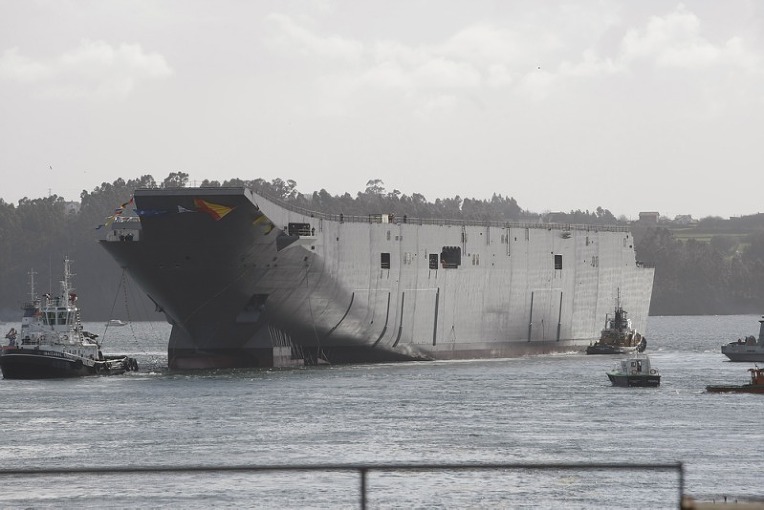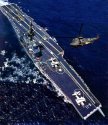By Mass Communication Specialist 2nd Class (SW/AW) Adam K. Thomas USS George Washington (CVN 73) Public Affairs
USS GEORGE WASHINGTON, At Sea (NNS) -- The "Dambusters" of Strike Fighter Squadron (VFA) 195 returned to the flight deck aboard USS George Washington (CVN 73) June 17, after completing the transition from the F/A-18C Hornet to the new and more advanced F/A-18E Super Hornet.
The return of VFA 195 make George Washington and Carrier Air Wing (CVW) 5 the first and only completely Super Hornet-equipped team in the Navy. George Washington now returns to sea with a total of four Super Hornet squadrons; 44 jet fighters in all.
"Having an all Super Hornet airwing definitely makes the CAG 5 and George Washington team a more lethal combination. These newer aircraft incorporate the latest in aviation technology. It's an honor to be this airwing's commander," said Capt. Daniel Cave, CVW 5 commanding officer.
The Super Hornet squadrons are now equipped with a broad arsenal of technologically advanced avionics including the faster APG-79 Active Electronically Scanned Array (AESA) radar. With a quick radar beam that can be steered at close to the speed of light, the new and improved system offers superior performance capabilities and makes the Super Hornet an even more powerful precision strike platform, providing revolutionary capability in favor of the George Washington/CAG 5 carrier strike group.
"There are some pretty significant upgrades in capabilities on these Super Hornets," said Cmdr. David Culpepper, VFA 195 commanding officer "The self protection, countermeasures capabilities and radar are much better than that of the legacy Hornets. I get to fly in the newest and best airplane out here, and you can't help but feel good to be the user of a very significant tax payer effort. That really is pretty cool. It obviously shows just how important the role of the George Washington and CAG 5 airwing is in the region. We are without question the most capable airwing in the Navy right now."
The transition to the new Super Hornets has a trickle-down effect for the Aviation Intermediate Maintenance Department (AIMD) personnel working below decks. With the arrival of new Super Hornets, their days have become a little less difficult.
"The transition has definitely made the AIMD workload lighter because now that all of the squadron's are flying Super Hornets, we only have to deal with one type of aircraft maintenance," said Aviation Electronics Technician 3rd Class Gregory Shaw Jr. "It has shortened the back log of repairs by reducing the time it takes to get the parts and [it has] minimized training time for personnel. The transformation to an all Super Hornet airwing is definitely making life a little easier."
For the younger Dambuster pilots who started their naval aviation careers in the older Hornets, the transition to the Super Hornets is like taking a step into the 21st century; a quantum leap they are thrilled to make.
"I think it's something special to be a part of this squadron and the CAG 5 airwing," said Lt. Brad Thomson, VFA 195 Super Hornet pilot. "We're forward-deployed and conducting operations in a strategically important part of the world, and now we have the most technologically advanced aircraft making us the only all Super Hornet airwing. It's just a good feeling to know there are very important people in Washington making sure we have the best assets possible to do this job."
USS George Washington's mission is to ensure security and stability across the Western Pacific ocean and to work with regional partners and respond to any crisis across the operational spectrum as directed.
For more news from USS George Washington (CVN 73), visit
.





